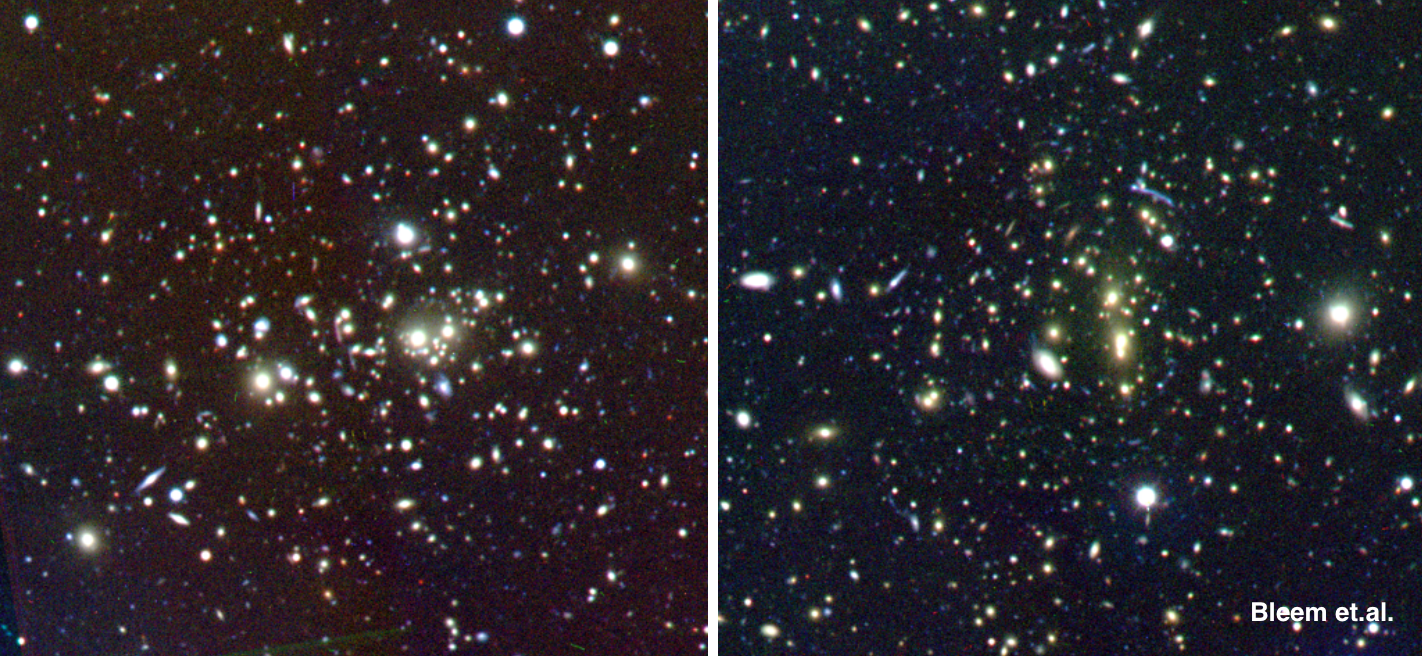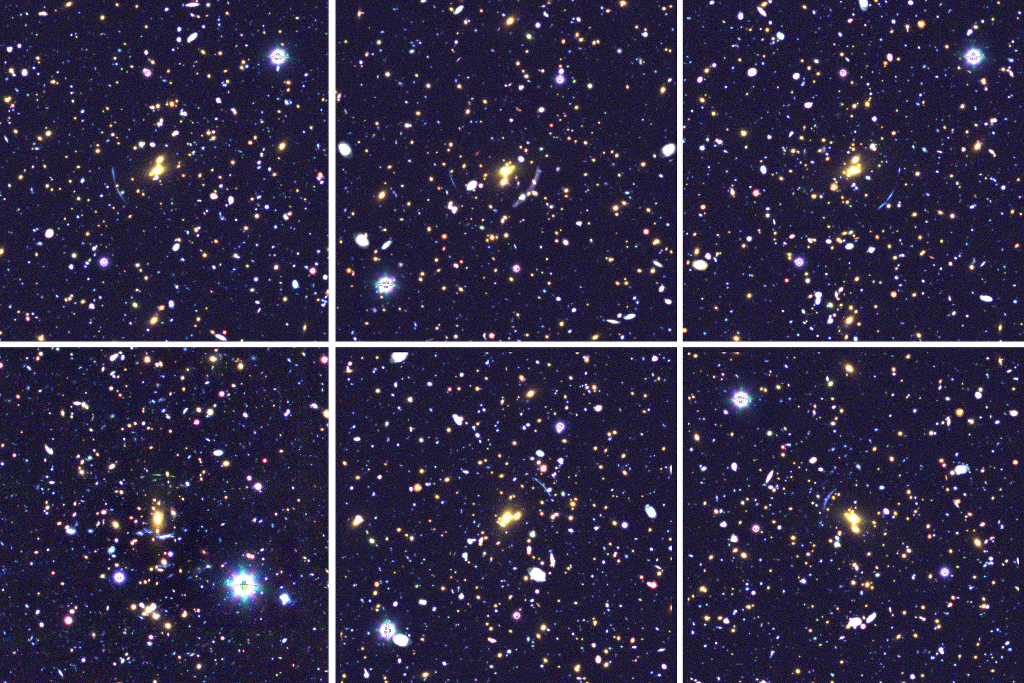Simulations of Gravitational Lensing in Galaxy Clusters
Cosmological strong gravitational lensing, in particular, probes the properties of the dense cores of dark matter halos over decades in mass and offers the opportunity to study the distant universe at flux levels and spatial resolutions that are otherwise unavailable. Strongly lensed variable sources offer yet further scientific opportunities. One of the challenges in realising the potential of strong lensing is in understanding the statistical context of both individual systems that receive extensive follow-up study, and the larger samples of strong lenses that are now emerging from survey efforts. Motivated by these challenges, my collaborators and I have developed a image-simulation pipeline to generate realistic strong gravitational lensing signals from group and cluster-scale lenses. This project has been the main focus of my work in the past two years.
The goal of our pipeline is to produce simulated images that appear identical (to the eye, expert or otherwise) to real observations in various imaging surveys. The pipeline uses a low-noise and unbiased density estimator based on Delaunay Tessellations to calculate the density field, and lensed images are produced by ray-tracing images of actual galaxies from deep Hubble Space Telescope observations. Other galaxies, similarly sampled, are added to fill in the light cone. The pipeline adds cluster member galaxies and foreground stars onto the lensed images. The entire image ensemble is then observed using a realistic point spread function, including bright stars with appropriate detector artifacts. Noise is then added, including non-gaussian elements such as noise window-paning from mosaiced observations, residual bad pixels and cosmic rays, and the like. Figure 1. shows comparison between simulated images and real observations for Magellan Telescope. Here are some examples for deferent telescopes.
The priority application of the pipeline is strong lensing arc statistics. It is well known that the frequency of strongly lensed arcs on the sky reflects the abundance, concentration, and astrophysical properties of massive lenses. Thus, arc statistics help trace structure formation and can in principle constrain cosmological parameters. First, a full sky light cone is built based on the halos for which M500 > 3 × 1014M⊙, from the Argonne Outer Rim simulation, one of the largest simulations currently available. Then the redshfit and positions of particles of a given halo can be obtained. By including these halos into the pipeline and setting the parameters for a given telescope (the Magellan Telescope by default), thousands of simulated images are produced. The statistical properties of simulated images are analyzed and compared to the optical follow-up results from the South Pole Telescope (SPT) cluster catalog (this last effort started in June 2015, see Figure 2).

An auxiliary use for the pipeline is to test the preservation of morphological measurements, such as the Gini coefficient, under strong gravitational lensing. In particular, as the new generation of space-based large survey telescopes come online, such as the Wide-Field Infrared Survey Telescope (WFIRST), the number of observed strong lensing systems is expected to expand into the thousands. Such systems provide more detailed views of the internal structure of galaxies at higher redshift than would otherwise be possible, however the challenge is extracting useful morphological information from such data. It will be necessary to develop morphological measurements that are conserved under gravitational lensing and some elements of the pipeline described above have been used to test the reliability of image plane measurements of the Gini coefficient (Florian 2015).
More coming Soon!
